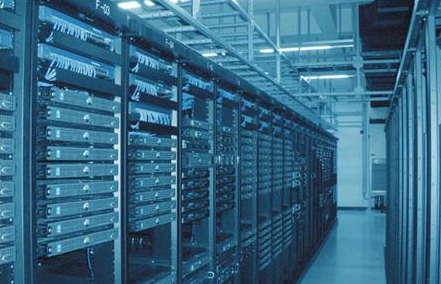Data center terminology mainly includes power supply and distribution system, wiring system, air conditioning system, cabinet system and network system, etc. These terms are an indispensable part of the daily work of data center. So, what are the technical terms of the data center room?

1. Data Center
A data center usually refers to the centralized processing, storage, transmission, exchange and management of information in a physical space, while computer equipment, server equipment, network equipment and storage equipment are usually considered as key equipment in the core computer room of the network. Environmental factors required for the operation of critical equipment, such as power supply systems, cooling systems, cabinet systems, fire protection systems, and monitoring systems, are generally considered critical physical infrastructure.
2. Computer Room
The building space is mainly used for the installation and operation of electronic information processing, storage, exchange and transmission equipment, including functional areas such as server room, network room and storage room.
3. Auxiliary Room
Places used for the installation, debugging, maintenance, operation monitoring and management of electronic information equipment and software, including the incoming line room, test room, monitoring center, spare parts warehouse, printing room and maintenance room and other areas.
4. Support Area
Support and guarantee the places where the information processing process and necessary technical operations are completed, including the power transformation and distribution room, diesel generator room, UPS room, battery room, air-conditioning room, power station room, fire-fighting facility room, fire-fighting and security control room, etc.
5. Administrative Area
Places used for daily administrative management and customer management of hosting equipment, including staff offices, halls, duty rooms, washrooms, dressing rooms, and user studios.
6. Redundancy
Redundancy is to repeatedly configure some components of the system. When some components in the system fail, the redundantly configured components intervene and undertake the work of the faulty components, thereby reducing the downtime of the system.
7. N - Base Requirement
The system meets the basic needs without redundancy.
8. N+X Redundancy
In addition to meeting the basic requirements, the system has added X units, X modules, X paths or X systems. The failure or maintenance of any X number of units, modules or paths will not result in interruption of system operation (X = 1 - N).
9. Fault Tolerant
A fault-tolerant system is a system with two or more sets of the same configuration. At the same time, at least two systems are working, and each system is a (N+M, M=0-N) structure. The field equipment configured according to the fault-tolerant system can withstand at least one serious sudden equipment failure or human error event without affecting the operation of the system.
10. Relative Humidity
The relative humidity φ represents the ratio of the water vapor partial pressure Ps in the air to the saturated water vapor partial pressure Pb at the same temperature, that is, φ=(Ps/Pb)×100%.
11. Enthalpy
In thermodynamics, it is a state function that represents the energy of a material system. It represents all the thermal energy contained in the working fluid, which is equal to the internal energy of the working fluid plus the product of its volume and absolute pressure. It is commonly represented by the symbol H.
12. Humidification
Refers to the moisture added to the air in a closed space, room or area per unit time, called humidification, and the unit is kg/h.
13. Energy Efficiency Ratio (EER)
Under rated operating conditions and specified conditions, when the air conditioner is in cooling operation, the ratio of cooling capacity to cooling power consumption.
14. Coefficient of Performance (COP)
Under the nominal working conditions specified by the relevant standards, the ratio of the cooling (heat) amount of the unit expressed in the same unit divided by the total input electric power.
15. Annual Energy Efficiency Ratio (AEER)
The ratio of the total amount of heat removed from the room to the total amount of electricity consumed when the computer room air conditioner performs annual cooling.
16. Refrigeration capacity or cooling capacity (Total Cooling Capacity)
When the air conditioner performs cooling operation under rated operating conditions and specified conditions, the sum of the heat removed from the confined space, room or area per unit time, the unit is kW.
17. Sensible Cooling Capacity
Under the specified cooling capacity experimental conditions, the air conditioner removes the heat of the sensible heat part from the computer room or base station, the unit is kW.
18. Refrigerating Consumed Power
Under the specified cooling capacity test conditions, the total power consumed by the computer room air conditioner, the unit is W.
19. Sensible HeatRatio
The ratio of sensible cooling capacity to total cooling capacity, expressed as a decimal not greater than 1.
20. Indoor Discharge Air-Flow
The ventilation door and exhaust door (if any) used by the air conditioner for the exchange of indoor and outdoor air are completely closed, and the air volume sent to the confined space, room or area per unit time under the rated refrigeration operating conditions, the unit is m3/h .
The above is the full content of the professional terms of the data center computer room. Of course, a qualified data center practitioner can only master these common terms and some design ideas in order to be handy in the management, operation and maintenance of the data center.










